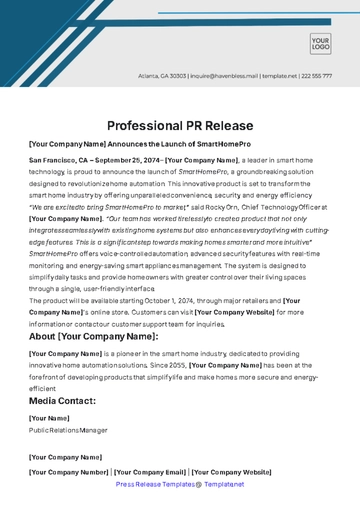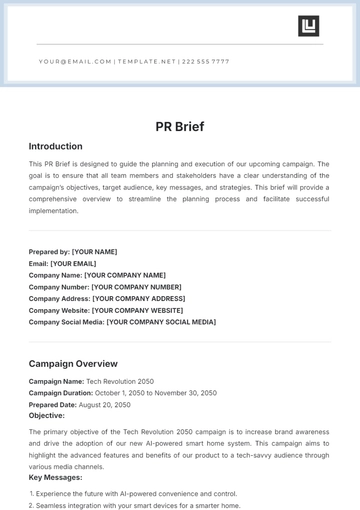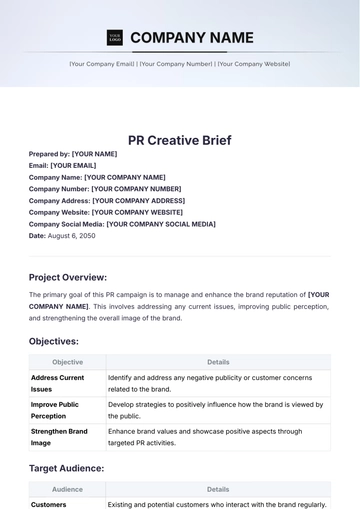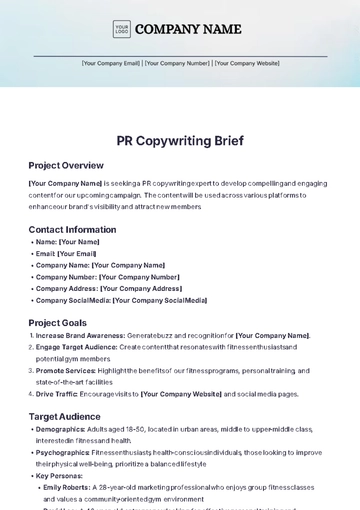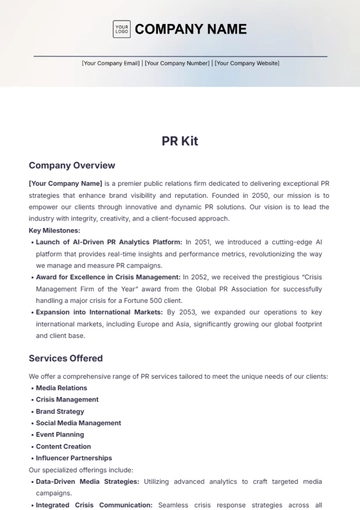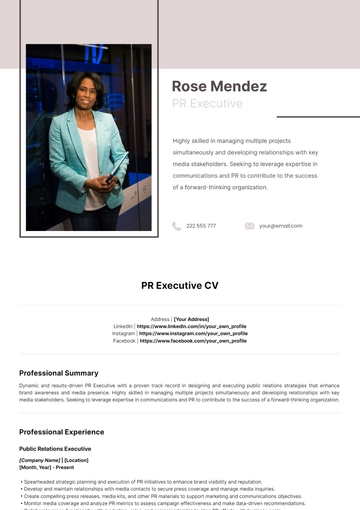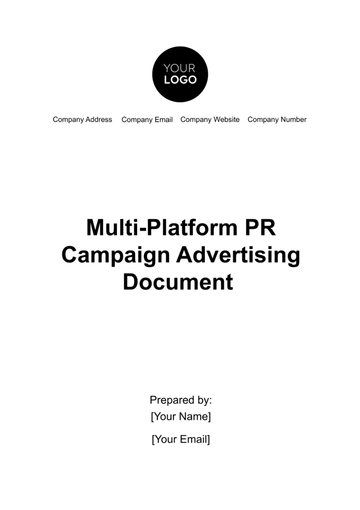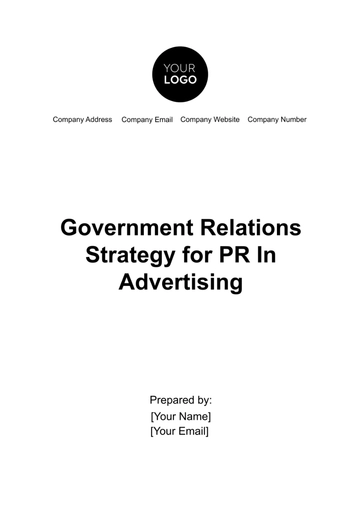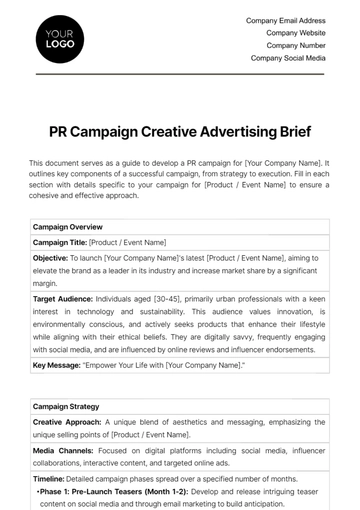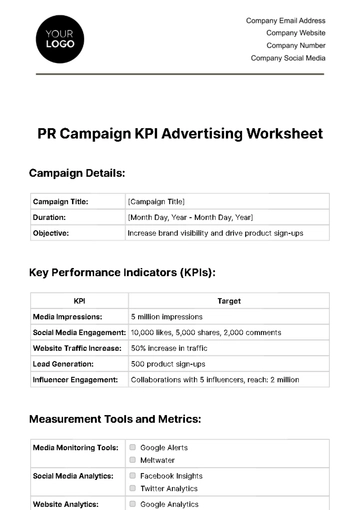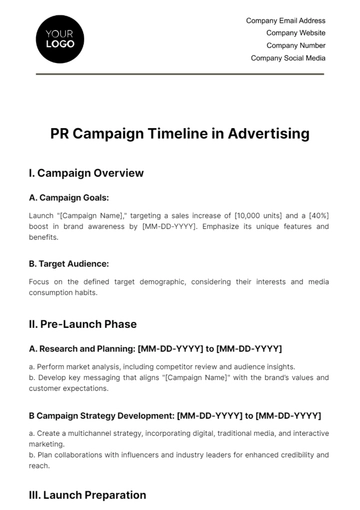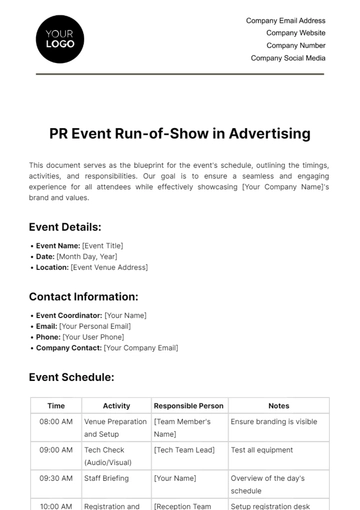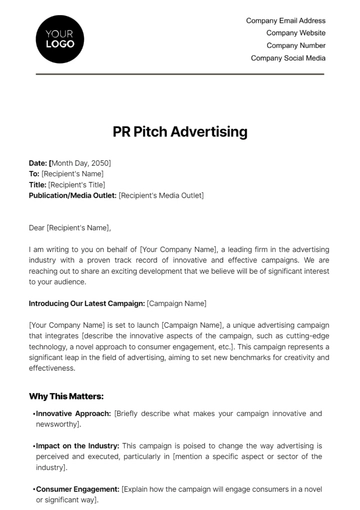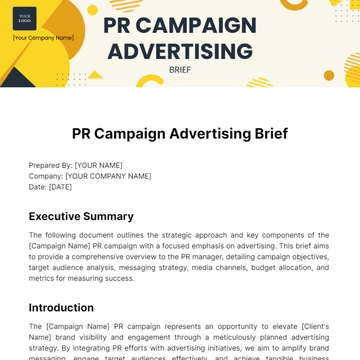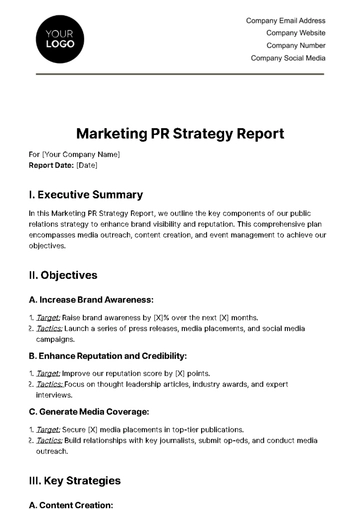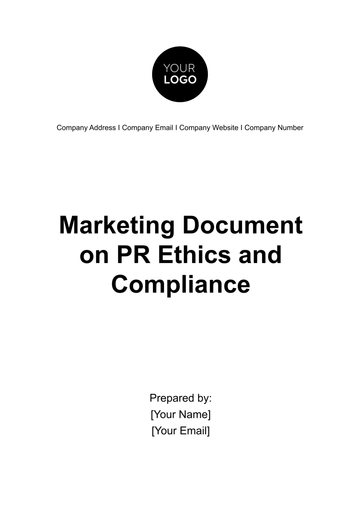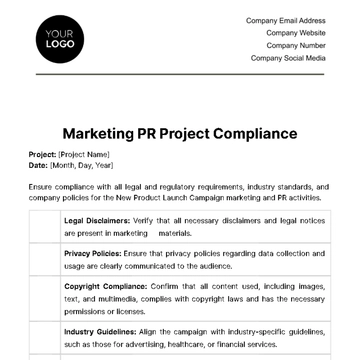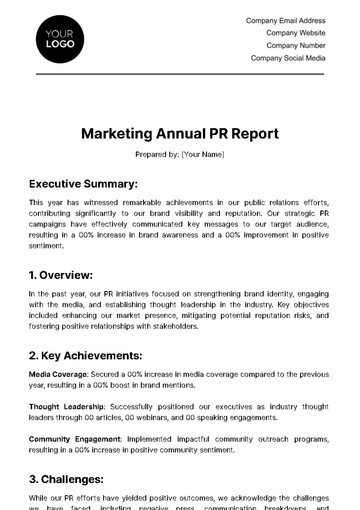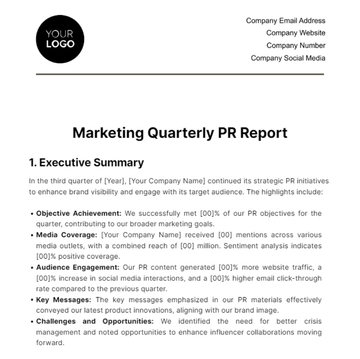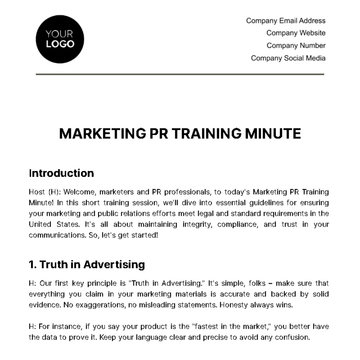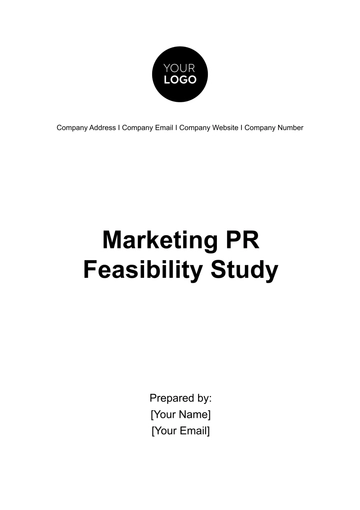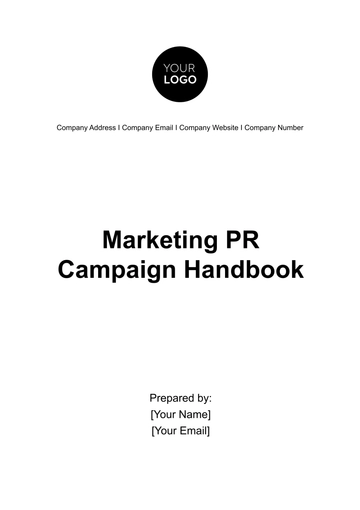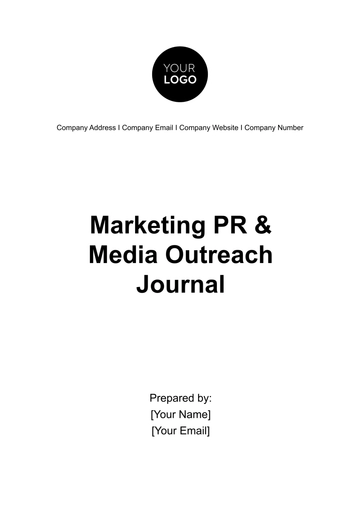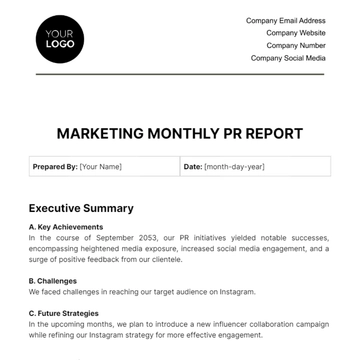Free Marketing PR Feasibility Study
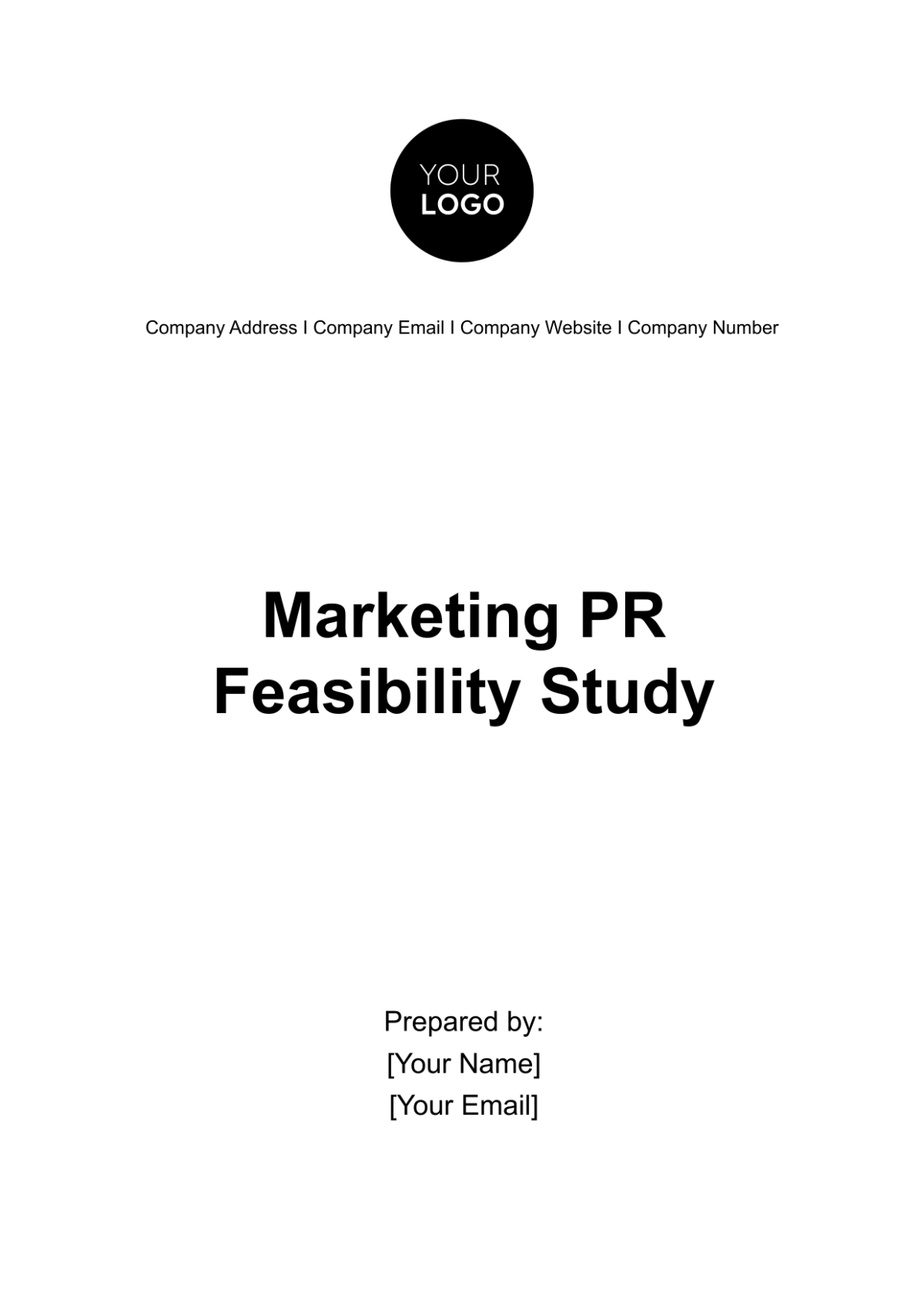
Executive Summary:
The Marketing PR Feasibility Study aims to provide a comprehensive assessment of the potential benefits, costs, and risks associated with implementing a robust Public Relations (PR) campaign for [Your Company Name]. The study will explore how this campaign can enhance the company's visibility, reputation, and market presence.
Background:
[Your Company Name] has established itself as a pioneer in the marketing industry, known for its innovative products and services. However, in the ever-evolving business landscape, there's a growing imperative to reinforce its brand image, expand market reach, and solidify its position as an industry leader.
Objectives:
This feasibility study is driven by the following objectives:
Evaluate the feasibility of launching a comprehensive PR campaign: Assess the readiness of the organization, market conditions, and the internal and external factors that could influence the success of a PR campaign.
Identify and articulate the potential benefits and anticipated outcomes of the PR initiative: Detail the expected positive impacts on brand recognition, market share, customer loyalty, and industry standing.
Assess the associated costs and resource requirements: Provide a detailed budget breakdown, including costs related to strategy development, content creation, media outreach, agency fees, event management, and analytics tools.
Analyze potential risks and devise effective mitigation strategies: Identify potential hurdles such as budget constraints, negative media attention, or measurement challenges, and outline clear strategies to address them.
Market Analysis:
Industry Overview
A comprehensive analysis of the industry highlights significant trends and statistics that underscore opportunities for [Your Company Name] to gain a competitive edge through strategic PR initiatives.
Market Growth Projections: The industry is poised for steady growth, with forecasts indicating a [0]% increase in market size over the next [0] years. This growth presents a favorable environment for [Your Company Name] to expand its market share.
Emerging Technologies: Recent advancements in AI-driven solutions have the potential to reshape the industry landscape. [Your Company Name] can leverage these trends to position itself as an innovator.
Consumer Preferences: Consumer surveys and focus groups reveal a growing demand for eco-friendly products—an area where [Your Company Name] excels. Highlighting these strengths can capture a larger share of the market.
Target Audience:
Understanding the target audience is critical for effective PR. [Your Company Name]'s potential audience includes tech-savvy millennials and professionals aged [00-00], primarily located in urban centers. They are environmentally conscious, seek convenience, and value sustainability.
Demographics: The audience comprises individuals aged [00-00], with most holding advanced degrees. They are tech-savvy, reside in major cities like New York, San Francisco, and Boston, and have a household income of $00,000 to $000,000 annually.
Interests and Preferences: They are active on social media, particularly Instagram and LinkedIn, where they engage with technology-related content. They prefer online shopping, prioritize sustainability, and follow eco-conscious influencers.
Challenges and Pain Points: The target audience faces challenges related to balancing work and personal life, environmental concerns, and keeping up with the latest technology trends.
Competitor Analysis:
Feasibility Assessment
Competitor Analysis
A comprehensive competitor analysis reveals valuable insights into how two prominent industry players, [Your Company] (Competitor 1) and (Competitor 2), have effectively harnessed PR campaigns to achieve notable milestones. This provides a valuable reference for [Your Company Name]'s PR strategy.
Competitor 1: [GreenTech Innovations]
Competitor 1 Overview: [GreenTech Innovations is a leading player in the sustainable technology sector. Established in 2050, the company has garnered significant attention for its innovative eco-friendly products, including solar-powered devices, energy-efficient appliances, and recyclable materials.]
Competitor 1 PR Strategies:
Strategic Partnerships: [Your Company] leveraged strategic partnerships with prominent environmental organizations, such as [List of Organizations]. These alliances resulted in positive media attention and positioned the company as a front-runner in sustainable tech.
Innovative Product Launches: Competitor 1 consistently introduced groundbreaking eco-friendly products, generating buzz through exclusive product launches covered by leading industry publications.
Competitor 1 Achievements:
[00%] Growth in Revenue: Through effective PR campaigns, Competitor 1 achieved a [00%] growth in revenue over the past two years, driven by increased consumer trust and demand for eco-conscious products.
Partnerships: [Your Company] secured a partnership with a prominent environmental NGO, EarthGuardians, resulting in extensive media coverage and increased brand recognition.
Areas for Improvement:
Crisis Management: [Your Competitor 1] faced challenges with crisis management during a product recall incident. Their response was perceived as slow and inadequate, resulting in negative media coverage and damaging their reputation.
Competitor 2: [Your Company Name]
Competitor 2 Overview: [Your Company Name], founded in [YYYY], specializes in sustainable technology solutions for businesses and consumers. Their product range includes energy-efficient HVAC systems, water purification technologies, and smart waste management solutions.
Competitor 2 PR Strategies:
Thought Leadership Approach: [Your Company Name] adopted a thought leadership approach, positioning their CEO as an industry expert. Their CEO frequently contributed expert commentary to leading industry publications and featured on popular tech podcasts.
Participation in Industry Events: Competitor 2 actively participated in industry events and conferences, often as a keynote speaker. This approach allowed them to connect with industry influencers and broaden their reach.
Competitor 2 Achievements:
[00]% Increase in Brand Recognition: Competitor 2 reported a remarkable [00]% increase in brand recognition over the last year, owing to their thought leadership strategy and consistent media presence.
[00]% Rise in Website Traffic: Their thought leadership content and participation in industry events drove a [00]% increase in website traffic, resulting in higher lead generation.
Areas for Improvement:
Crisis Management: Similar to Competitor 1, Competitor 2 faced challenges with crisis management during a data breach incident. Their response was swift but lacked a comprehensive communication plan, leading to some reputational damage.
PR Campaign Strategy:
Objectives
The PR campaign is designed to achieve the following objectives:
Elevate brand awareness and recognition within the target market: The primary goal is to ensure that [Your Company Name] is a recognized and respected name among the target audience.
Establish [Your Company Name] as an authoritative thought leader: By consistently delivering insightful content and thought-provoking commentary, [Your Company Name] can position itself as a go-to source for industry expertise.
Foster positive media coverage and widespread publicity: Engaging with key media outlets and influencers can result in favorable coverage that enhances the brand's reputation.
Amplify the company's reputation, credibility, and trustworthiness among stakeholders: Building trust among customers, partners, and investors is vital for long-term success.
Key Messages:
The key messages to be conveyed throughout the PR campaign will revolve around the following themes:
Message 1: "Discover Innovation That's Good for You and the Planet."
Elaboration: At [Your Company Name], we're not just about innovation; we're about innovation with a purpose. Our products are designed to make your life easier while reducing your environmental footprint. We're dedicated to creating technology that enhances your daily experiences while contributing to a sustainable future.
Message 2: "Leading the Way in Sustainable Tech Solutions."
Elaboration: Sustainability isn't just a buzzword for us; it's at the core of everything we do. [Your Company Name] is committed to pioneering sustainable technology solutions that set the industry standard. Our dedication to eco-conscious practices drives us to continually innovate and lead the charge toward a greener, more sustainable future.
Message 3: "Simplify Your Life with Sustainable Technology."
Elaboration: In a world filled with complexity, [Your Company Name] is your partner in simplifying your life. Our sustainable tech solutions aren't just about cutting-edge features; they're about making your life more convenient and enjoyable. We believe that technology should enhance your daily routines, providing seamless solutions that align with your values.
Message 4: "Your Trusted Partner for a Brighter Tomorrow."
Elaboration: Trust is the foundation of every successful relationship. At [Your Company Name], we strive to earn and maintain your trust daily. We're not just selling products; we're building a partnership focused on creating a brighter and more sustainable tomorrow. Count on us to deliver on our promises and values.
Resource Requirements:
Budget
The estimated budget for the PR campaign amounts to $0,000,000, encompassing the following itemized expenses:
Media Outreach: $000,000, including expenses related to media list procurement, press release distribution, and influencer engagement.
Content Creation: $000,000, covering the development of articles, whitepapers, infographics, videos, and other collateral.
Agency Fees: $000,000 will be allocated to hire an experienced PR agency to manage campaign execution.
Event Management: $000,000 is allocated for organizing events and conferences where [Your Company Name] will have a presence.
Measurement Tools: $000,000 includes implementing advanced analytics tools for precise ROI measurement.
Human Resources:
Executing the campaign effectively necessitates a dedicated team comprising 15 PR professionals and support staff. An external PR agency will be engaged to manage campaign execution.
In-House Team: The internal team will include content creators, PR specialists, analysts, and event coordinators.
External PR Agency: [Agency Name], with a proven track record in the tech industry, will oversee media outreach, influencer engagement, and crisis communication.
Timeline:
The proposed timeline for the PR campaign spans from Month Day, Year, to Month Day, Year, encompassing [0] months. This phased approach ensures a well-structured rollout of activities, allowing for meticulous planning and execution.
Month | Activity |
Month 1 | Campaign kickoff, team formation, and strategy development. |
Benefits and Outcomes:
Expected Benefits
The PR campaign is poised to deliver an array of benefits, including:
Marked improvement in brand visibility and recognition: Through strategic media placements and thought leadership content, [Your Company Name] will become a household name in the [industry] industry.
Positive media coverage in leading publications and digital platforms: By building strong relationships with key media outlets, [Your Company Name] will secure favorable coverage that enhances its reputation.
Elevated reputation and enhanced credibility in the eyes of key stakeholders: Consistent, authoritative messaging and expert commentary will bolster trust in [Your Company Name] among customers, partners, and investors.
Substantial growth in market share and expansion of the customer base: Increased visibility and a more favorable brand image will drive customer acquisition and retention.
Measurement Metrics:
To gauge the campaign's success, a robust set of metrics will be tracked, including but not limited to:
Media mentions and their reach across diverse channels: The goal is to achieve at least [000] media mentions across leading tech and sustainability publications, with a reach exceeding [00] million.
Website traffic and user engagement, with a particular focus on conversion rates: We aim for a [00]% increase in website traffic and a [00]% improvement in conversion rates.
Quantitative and qualitative analysis of brand sentiment: Through sentiment analysis tools, we will target a [00]% increase in positive brand sentiment among our target audience.
A comprehensive ROI analysis that factors in both tangible and intangible outcomes: The goal is to achieve an overall ROI of [0:0], considering both direct financial returns and indirect benefits such as enhanced brand reputation.
Risks and Mitigation Strategies:
Potential Risks
Several potential risks may impact the success of the PR campaign, including:
Insufficient budget allocation leading to resource limitations: Budget constraints may limit the extent of media outreach and content quality, potentially affecting campaign effectiveness.
The possibility of negative media attention or public backlash: Unexpected events or controversies may result in negative publicity that could harm the brand's reputation.
Difficulty in accurately measuring ROI due to the multifaceted nature of PR outcomes: PR outcomes, especially those related to brand reputation, can be challenging to quantify accurately.
Mitigation Strategies:
To mitigate these risks effectively, we propose the following strategies:
Regular budget reviews and reallocations as necessary to ensure campaign success: Quarterly budget assessments will allow us to adjust allocations based on performance and changing circumstances.
Development of a robust crisis communication plan to address any negative publicity promptly and effectively: A crisis communication team will be on standby to respond to any negative events, and predefined communication protocols will be in place.
Implementation of advanced analytics tools to provide precise ROI measurements, including both quantitative and qualitative metrics: Advanced analytics tools will enable us to measure brand sentiment, website traffic, and conversion rates accurately.
Conclusion:
The Marketing PR Feasibility Study conclusively demonstrates that the proposed PR campaign is not only feasible but also holds the potential to yield significant advantages for [Your Company Name]. The in-depth analysis of market dynamics, resource requirements, anticipated outcomes, and risk mitigation strategies provides a solid rationale for moving forward with the campaign.
This study strongly recommends proceeding with the PR campaign, capitalizing on the identified opportunities to strengthen [Your Company Name]'s position in the marketing industry and elevate its brand image. Detailed budget breakdowns and comprehensive timelines are provided in the appendices for reference and planning.
- 100% Customizable, free editor
- Access 1 Million+ Templates, photo’s & graphics
- Download or share as a template
- Click and replace photos, graphics, text, backgrounds
- Resize, crop, AI write & more
- Access advanced editor
Navigate PR success with Template.net's Marketing PR Feasibility Study Template. This editable tool simplifies the study process, effortlessly tailored in our AI Editor Tool. Enhance your marketing strategy with a comprehensive template, guiding a strategic and informed approach to public relations. Pave the way for success with this innovative feasibility study template.
